# EMSC 3002 ## Structures Associated with Folding: Lineations and Boudinage - Louis Moresi (convenor) - **Romain Beucher** (lecturer) - Chengxin Jiang (lecturer) - Stephen Cox (curriculum advisor) Australian National University _**NB:** the course materials provided by the authors are open source under a creative commons licence. We acknowledge the contribution of the community in providing other materials and we endeavour to provide the correct attribution and citation. Please contact louis.moresi@anu.edu.au for updates and corrections._ <--o--> ## Resources 1. **Fossen, H, 2011.** *Structural Geology.* Cambridge University Press, 2nd Edition **Chapter 11** 1. **McClay, K.R. 1991.** *The Mapping of Geological Structures.* John Wiley & Sons. **Chapter 3** 1. **Park, R.G., 1995.** *Foundations of Structural Geology.* Blackie & Sons Ltd. **Chapter 2** 1. **Davis, G.H. and Reynolds, S.J., 1996.** *Structural Geology of Rocks and Regions.* 2nd Edition, John Wiley & Sons. **Chapter 7** <!-- 1. **Hatcher, R.D., 1990.** *Structural Geology - Principles, Concepts, and Problems*, 2nd Edition, Prentice-Hall --> <!-- 1. **Ramsay, J.G. and Huber, M.I. 1983.** *Modern Structural Geology. Volume 1: Strain Analysis.* Academic Press. --> <!-- 1. **Ramsay, J.G. and Huber, M.I. 1987.** *Modern Structural Geology. Volume 2: Folds and Fractures.* Academic Press. --> <--o--> ## Intended learning outcomes <--o--> ### Introduction <div> <div style='width:50%; float:left'> A *lineation* is a fabric element in which one dimension is significantly larger than the other two. - Very common in Metamorphic Rocks - Closely associated with strain and transport or shear direction and in such useful to determine paleostresses orientations and kinematics. Different types of lineations, different origins and implications for the history of deformation </div> <div style='width:50%; float:right'>  <!-- .element style='float: right' width='90%' --> </div> </div> <--o--> <!-- .slide: data-background="Module-v-Ductile-Deformation/Figures-Structures-Associated-with-Folding-2/Photos/Lineations1.jpg" --> <--o--> #### Primary or non-tectonic lineations <div> <div style='width:50%; float:left'> Can occur in both deformed and non-deformed rocks. examples: - Flow lineations and columns in basalts and magmatic rocks. - Alignements of non spherical pebbles, fossils etc. </div> <div style='width:50%; float:right'> 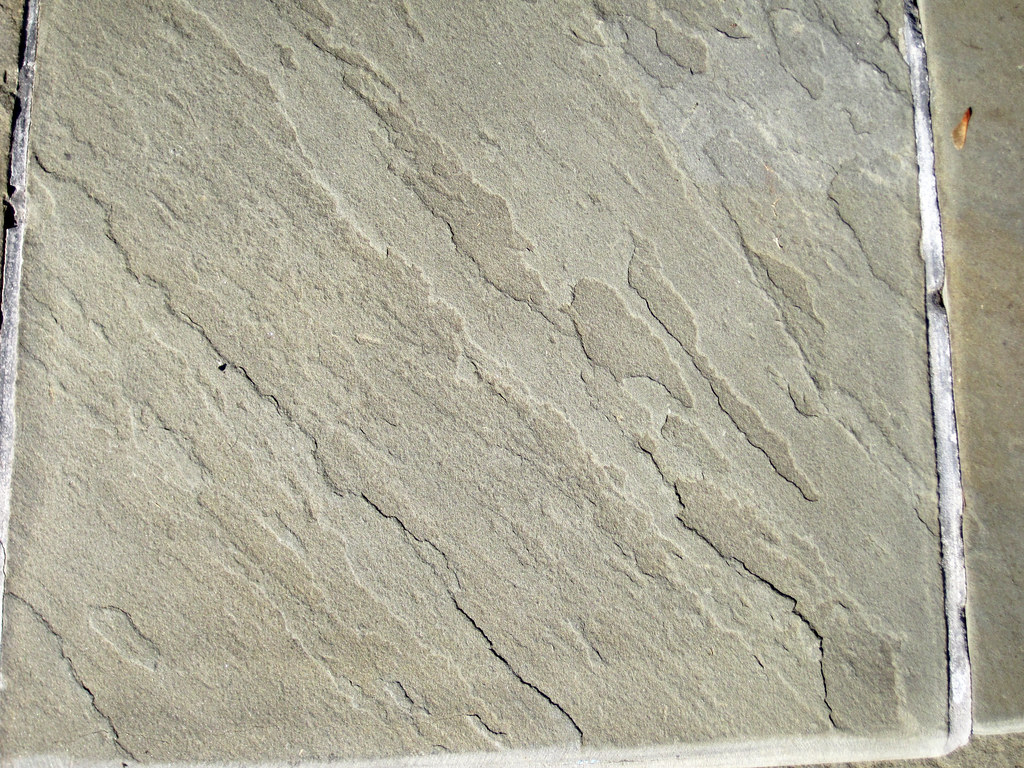 <!-- .element style='float: right' width='90%' --> </div> </div> <--o--> #### Tectonic lineations Linear structures resulting from the deformation of a rock under tectonic stresses. - **Penetrative lineation**: build-up a linear fabric or **L-Fabric** - **Surface lineation**: Restricted to a surface (e.g. *Slikenslides*) - **Geometric lineation**: fold axes, intersection lineations <--o--> ### Tectonic lineations #### Processes There exist a range of processes that can result in the formation of tectonic lineations: - Rotation - Crystallisation - Plastic strain - Fracture <--o--> ### Tectonic lineations <div> <div style='width:60%; float:left'> #### Processes: Rotation Rigid minerals can rotate without deforming. Rotation is most efficient if the strain is constrictional. It also depends on the original orientation of the object relative to the stress orientations. Example: Rotation of amphibole minerals in amphibole-mica schists. Stiff minerals rotate while the matrix deforms plastically. </div> <div style='width:40%; float:right'> 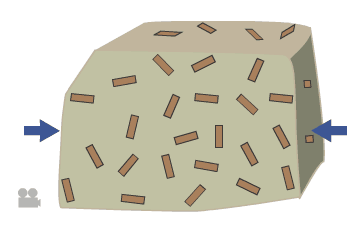 <!-- .element style='float: right' width='100%' --> </div> </div> <--o--> ### Tectonic lineations <div> <div style='width:60%; float:left'> #### Processes: Rotation Note that relatively high strain is required to rotate minerals of various lengths and shapes into parallelism. You should always consider the possibility of recrystallization. Rotations of minerals in a partial melt is possible (during solidification for example). Tectonic strain and strain related to the emplacemnent of a pluton can produce linear fabrics </div> <div style='width:40%; float:right'>  <!-- .element style='float: right' width='100%' --> </div> </div> <--o--> ### Tectonic lineations <div> <div style='width:60%; float:left'> #### Processes: Crystallization As metamorphic conditions evolve (pressure, temperature, fluids), some minerals become unstable and new ones crystallize. If the new mineral are elongated (e.g. pyroxene, tourmaline) and grow in a preferred direction they can define a mineral lineation. Growth can be directed by the external stress field and/or existing fabric in the rock. *Growth of Amphibole during metamorphism, producing a mineral lineation.* </div> <div style='width:40%; float:right'>  <!-- .element style='float: right' width='100%' --> </div> </div> <--o--> ### Tectonic lineations <div> <div style='width:60%; float:left'> #### Processes: Crystallization The resulting L-structure is sometimes called **nematoblastic**. **How do we distinguish between crystallization and rotation?** Rotation commonly involves some deformation of the grain. Rotation is unlikely to achieve perfect parallelism. *Prismatic mineral without preferred orientation form by static growth, syntectonic growth can produce lineations* </div> <div style='width:40%; float:right'>  <!-- .element style='float: right' width='100%' --> </div> </div> <--o--> ### Tectonic lineations <div> <div style='width:50%; float:left'> #### Processes: Plastic Strain **Plastic change in shape** Strain results from plastic deformation. It may involve: - diffusion - dissolution (wet diffusion, pressure solution) - dislocation migration Plastic strain can create or accentuate mineral lineations. </div> <div style='width:50%; float:right'>  <!-- .element style='float: right' width='90%' --> </div> </div> <--o--> ### Tectonic lineations <div> <div style='width:50%; float:left'> #### Processes: Plastic Strain **Plastic change in shape** Spherical objects will be turned into elongated objects. If there are many objects we can end up with a linear fabric. Constrictional strains give the most pronounced linear shapes while flattening strains do not produce strong linear fabrics. Lineation of this type are called **stretching lineations**. The stretching direction defines the lineation direction. </div> <div style='width:50%; float:right'>  <!-- .element style='float: right' width='90%' --> </div> </div> <--o--> #### Lineations related to plastic deformation **Penetrative lineations** are typically found in rocks that deformed in the plastic regime. - **L-Tectonites**: Lineations form the dominant fabric (X>>Y>>Z) - **LS-Tectonites**: Combination of foliations and penetrative lineations (Very common) - **S-Tectonites**: no or very little linear fabric. <--o--> ### Tectonic lineations <div> <div style='width:50%; float:left'> #### Processes: Fracture **Brittle change in shape** Fractures may give objects more linear shapes. This can happened when minerals are fractured and pulled apart (i.e. boudinaged) Outcrop-scale boudinage tends to transform planar layers into elongated objects. Occurs at micro- and macroscopic scales. </div> <div style='width:50%; float:right'>  <!-- .element style='float: right' width='90%' --> </div> </div> <--o--> ### Tectonic lineations <div> <div style='width:50%; float:left'> #### Processes: Fracture **Brittle change in shape** Fractures may give objects more linear shapes. This can happened when minerals are fractured and pulled apart (i.e. boudinaged) Outcrop-scale boudinage tends to transform planar layers into elongated objects. Occurs at micro- and macroscopic scales. </div> <div style='width:50%; float:right'> 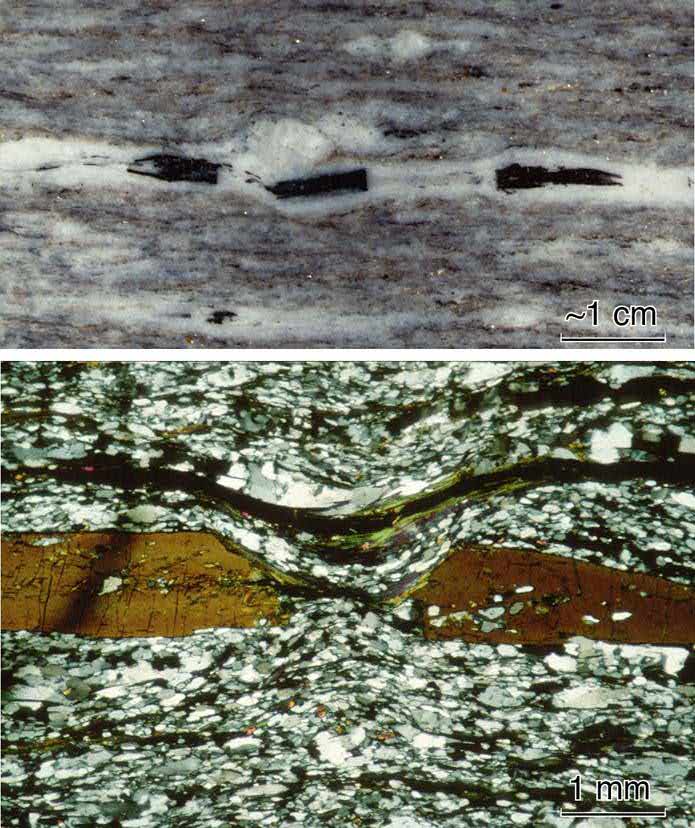 <!-- .element style='float: right' width='80%' --> </div> </div> <--o--> <!-- .slide: data-background="Module-v-Ductile-Deformation/Figures-Structures-Associated-with-Folding-2/Photos/Lineations3.jpg" --> <--o--> #### Penetrative lineations <div> <div style='width:50%; float:left'> ##### Stretching lineations **Stretching lineations**: stretching of minerals into a penetrative stretching lineation form the most common type of lineation in deformed rocks. Mineral can grow well-aligned fibrous elements in the direction of stretching or perpendicular to opening walls that define a **mineral fiber lineation** </div> <div style='width:50%; float:right'> 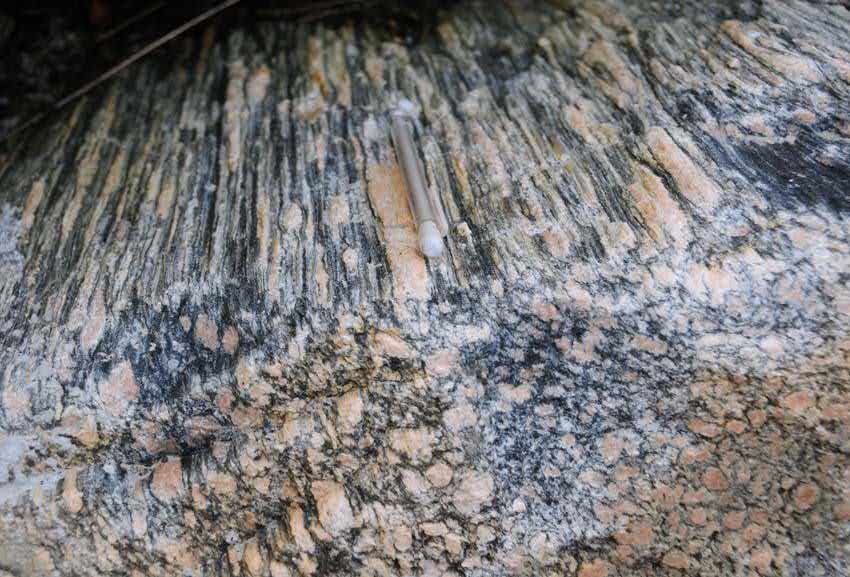 <!-- .element style='float: right' width='90%' --> </div> </div> <--o--> <!-- .slide: data-background="Module-v-Ductile-Deformation/Figures-Structures-Associated-with-Folding-2/Photos/Lineations5.jpg" --> <--o--> #### Penetrative lineations <div> <div style='width:50%; float:left'> ##### Mineral lineations Minerals and mineral aggregates can form a linear fabric via recrystallisation, dissolution / precipitation or rigid rotation. Cataclasis (crushing) of minerals can also lead to the formation of linerations (example in shear-zones). *Mineral lineation in granitic gneiss defined by elongated feldspar grains. The lineation is also a stretching lineation.* </div> <div style='width:50%; float:right'>  <!-- .element style='float: right' width='90%' --> </div> </div> <--o--> ### Geometric lineations <div> <div style='width:50%; float:left'> #### Fold Axes and Crenulation lineation Fold axes are theoretical or geometric lines rather than actual physical objects. High densities of parallel fold axis can constitue a fabric and create a **crenulation lineation**. </div> <div style='width:50%; float:right'>  <!-- .element style='float: right' width='60%' --> </div> </div> <--o--> ### Surface lineations <div> <div style='width:50%; float:left'> #### Intersection lineation Intersection of planar structures in deformed rocks can define an **intersection lineation**. When the first tectonic cleavage (S1) intersect the bedding (S0), the resulting lineation (L1) can be observed on the bedding planes. **Intersection lineations** can also result from the intersection of two tectonic foliations/cleavages. </div> <div style='width:50%; float:right'>  <!-- .element style='float: right' width='90%' --> </div> </div> <--o--> ### Surface lineations <div> <div style='width:50%; float:left'> #### Intersection lineation *Stereoplot showing bedding orientation in green and cleavage of the fold to the left. The intersection lineation is the point of interesection between $S_0$ and the cleavage (square)* </div> <div style='width:50%; float:right'>  <!-- .element style='float: right' width='90%' --> </div> </div> <--o--> ### Surface lineations <div> <div style='width:50%; float:left'> #### Mullions **Mullions** are linear deformation structures at interfaces where there is a significant viscosity contrast. e.g. in metamorphic rocks, at the boundary between Quartzite and Phyllite or Micashist. </div> <div style='width:50%; float:right'> 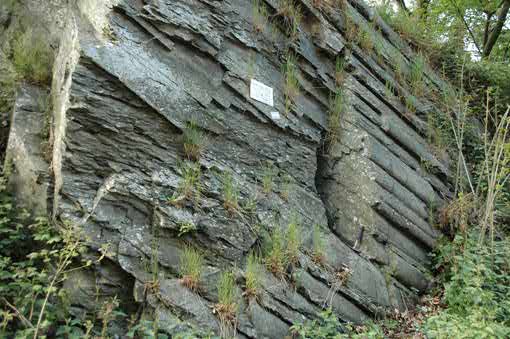 <!-- .element style='float: right' width='90%' --> </div> </div> <--o--> <!-- .slide: data-background="Module-v-Ductile-Deformation/Figures-Structures-Associated-with-Folding-2/Photos/Lineations11.jpg" --> <--o--> ### Surface lineations <div> <div style='width:50%; float:left'> #### Mullions **Mullions** are linear deformation structures at interfaces where there is a significant viscosity contrast. e.g. in metamorphic rocks, at the boundary between Quartzite and Phyllite or Micashist. </div> <div style='width:50%; float:right'>  <!-- .element style='float: right' width='90%' --> </div> </div> <--o--> ### Surface lineations <div> <div style='width:50%; float:left'> #### Slickenlines Occur on fracture surfaces There are two types of slickenlines: **striations** which are formed by abrasion and **slip fiber lineations** formed by fibrous growth. Hard objects and asperities can carve linear tracks known as **fault grooves** *Slickenlines (striae) on sandstone, near Moab, Utah. Credit Haakon Fossen* </div> <div style='width:50%; float:right'> 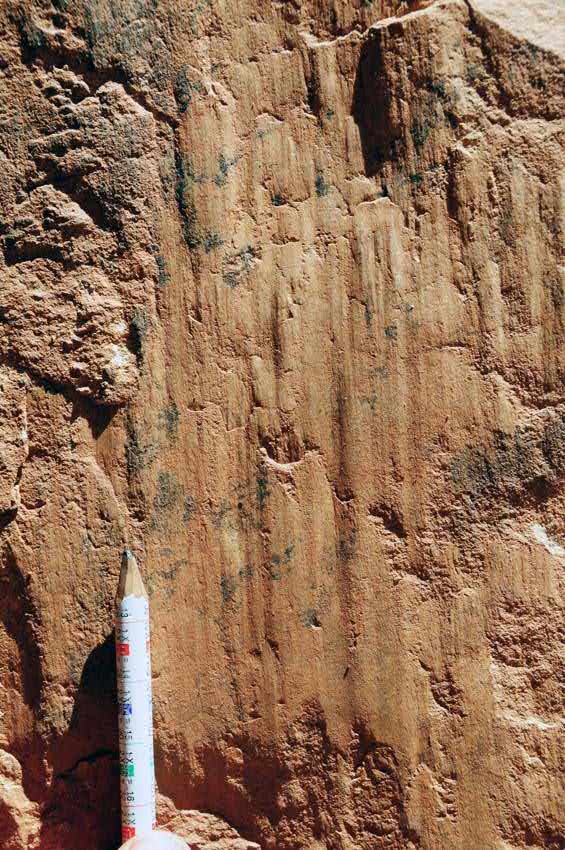) <!-- .element style='float: right' width='70%' --> </div> </div> <--o--> <!-- .slide: data-background="Module-v-Ductile-Deformation/Figures-Structures-Associated-with-Folding-2/Photos/Lineations15.jpg" --> <--o--> ### Surface lineations <div> <div style='width:50%; float:left'> #### Slickenlines In some fractures minerals grow as vein opens. The minerals tend to have an elongated shape and a fibrous aspect. </div> <div style='width:50%; float:right'> 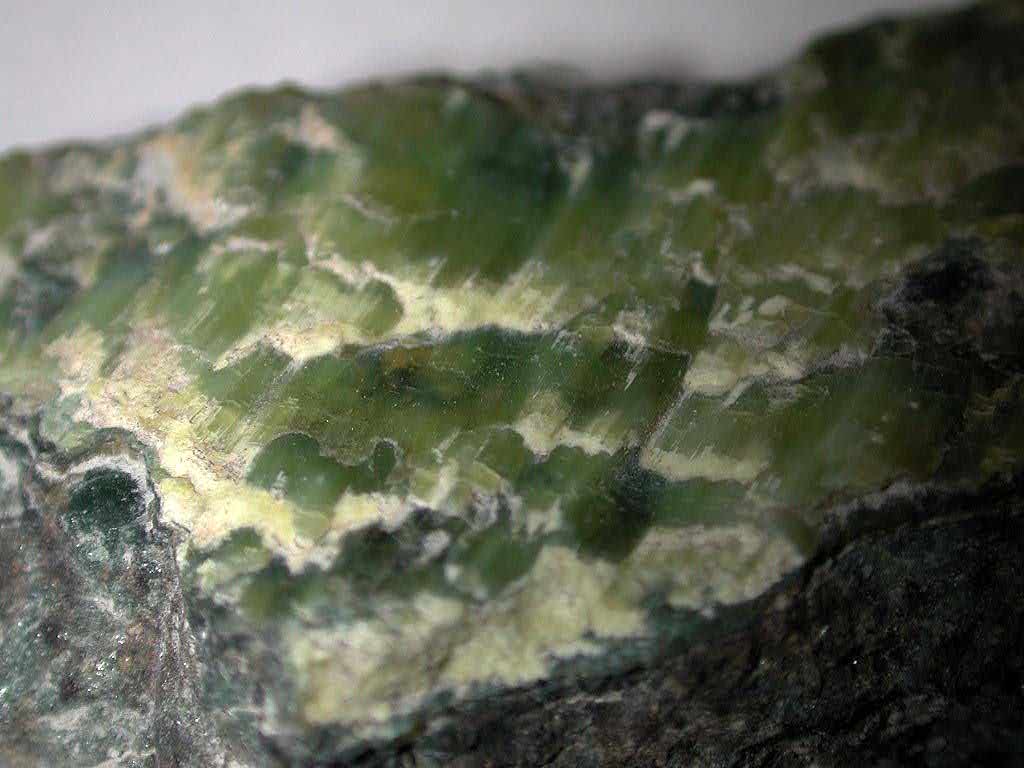) <!-- .element style='float: right' width='90%' --> </div> </div> <--o--> <!-- .slide: data-background="Module-v-Ductile-Deformation/Figures-Structures-Associated-with-Folding-2/Photos/Lineations17.jpg" --> <--o--> ### Surface lineations <div> <div style='width:50%; float:left'> #### Corrugations Many slip surfaces show a cylindrical curviplanar geometry that mimics corrugated roofing. Corrugations form a surface lineation parallel to the striations. </div> <div style='width:50%; float:right'> ) <!-- .element style='float: right' width='90%' --> </div> </div> <--o--> <!-- .slide: data-background="Module-v-Ductile-Deformation/Figures-Structures-Associated-with-Folding-2/Photos/Lineations20.jpg" --> <--o--> ### Surface lineations <div> <div style='width:50%; float:left'> #### Corrugations Many slip surfaces show a cylindrical curviplanar geometry that mimics corrugated roofing. Corrugations form a surface lineation parallel to the striations. </div> <div style='width:50%; float:right'> 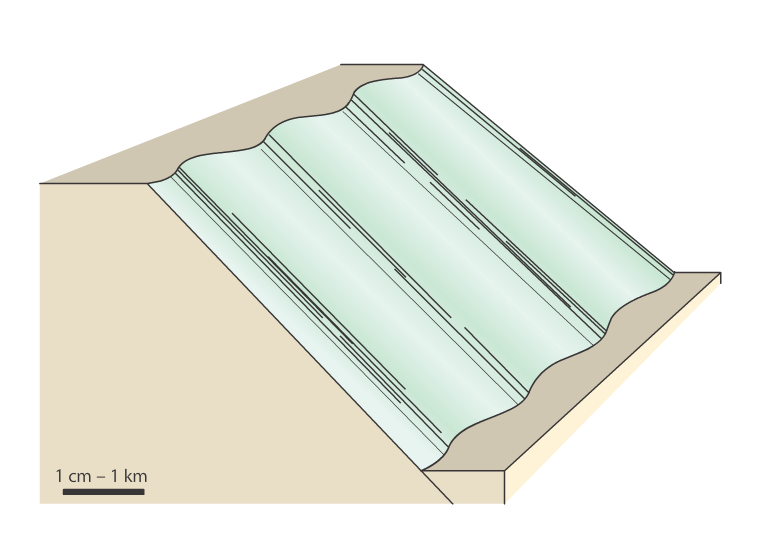) <!-- .element style='float: right' width='90%' --> </div> </div> <--o--> ### Folded lineations <div> <div style='width:50%; float:left'> Lineations are commonly folded. This can happened in two ways: - During progressive deformation in a shear zone. - During a later phase of deformation, unrelated to the formation of the lineation. </div> <div style='width:50%; float:right'> 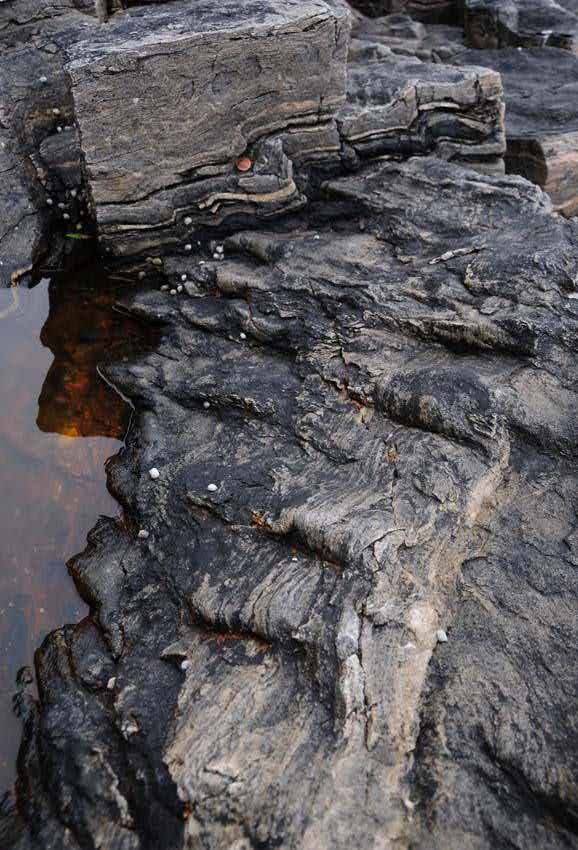) <!-- .element style='float: right' width='70%' --> </div> </div> <--o--> ### Lineations and strain <div> <div style='width:50%; float:left'> Penetrative lineations that form as a result of strain or through rigid rotation of minerals, represent the direction of maximum finite extension (The X-axis of the strain ellispoid). Simple shear deformation produces a lineation that is oblique to the shear zone. Pure shear deformation produces a lineation that remains parallel to the deformation zone. </div> <div style='width:50%; float:right'>  <!-- .element style='float: right' width='70%' -->  <!-- .element style='float: right' width='70%' --> </div> </div> <--o--> ### Lineations and strain <div> <div style='width:50%; float:left'> #### Boudinage Boudins are competent rock layers that have been stretched into segments. As they are commonly much longer in one direction, they can define a lineation. Lineations formed by boudinage form along Y. i.e. perpendicula to X. </div> <div style='width:50%; float:right'>  <!-- .element style='float: right' width='70%' --> </div> </div> <--o--> ### Lineations and strain <div> <div style='width:50%; float:left'> #### Surface lineations Surface lineations have a much more indirect relationship with strain since they are bound by the fracture surface on which they occur. **Slickenlines**, **striae** and other lineations associated with faults are parallel to the direction of movement but do not reveal the sense of shear which need to be determined via observation of other markers. The exception is fiber linearions on extension fractures where the fibers tend to be parallel to X (direction of opening) </div> <div style='width:50%; float:right'> 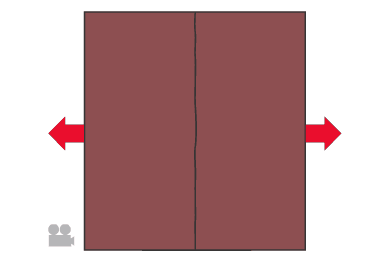 <!-- .element style='float: right' width='90%' --> </div> </div> <--o--> ### Map scale patterns <div> <div style='width:50%; float:left'> Lineations have been used to interpet strain and movement pattern related to orogeny. *Stretching lineations map related to the Caledonian orogeny in S Norway. The lineations are generally intrepretated as the direction of thrusting* </div> <div style='width:50%; float:right'> 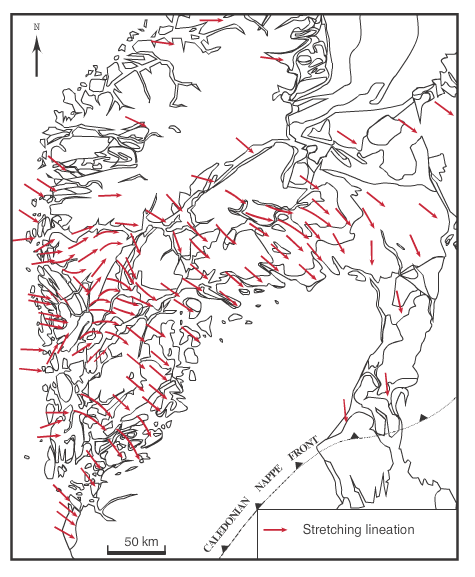) <!-- .element style='float: right' width='90%' --> </div> </div> <--o--> ## Conclusions - Lineations are linear structures in rocks. - They may be **penetrative** or confined to **surface** - **Geometric lineations** are theoretical lines such as fold axes - **Tectonic lineations** occur as a result of tectonic deformation - Stretching of objects form **stretching lineations** - Rotation of elongated minerals can create a lineation. - Crystallization of new minerals in a preferred direction can create a lineation. - Lineations, particularly stretching lineations are very useful for regional tectonic analysis.